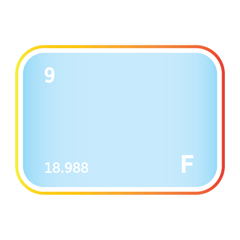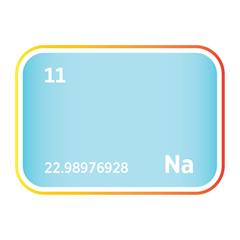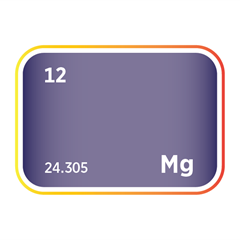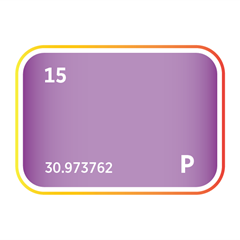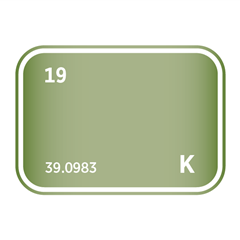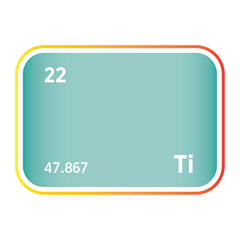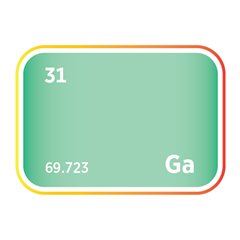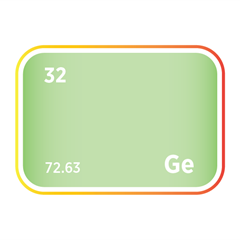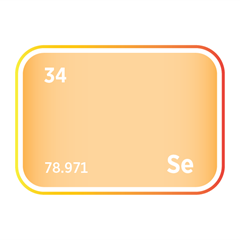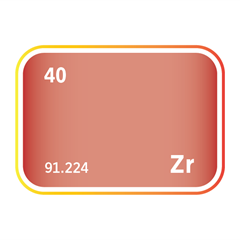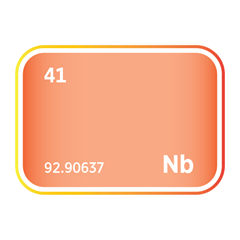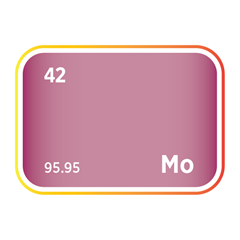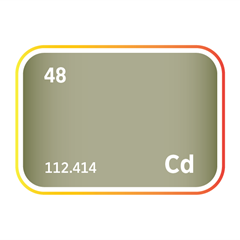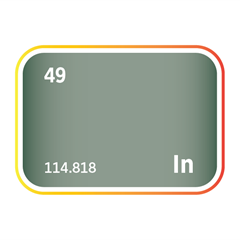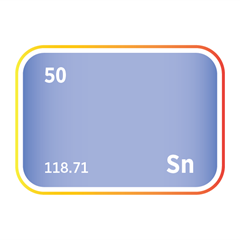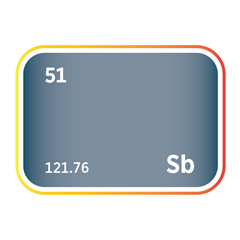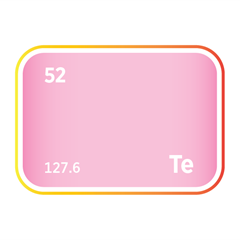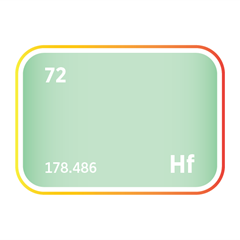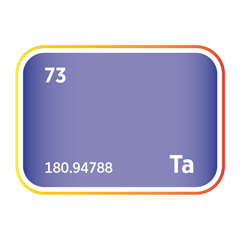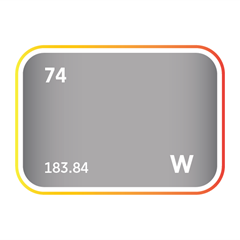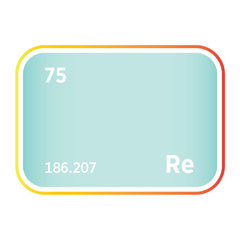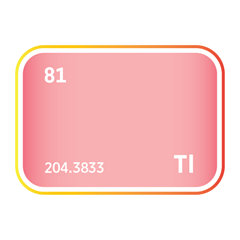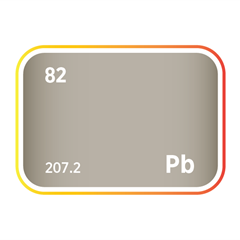Cesium
Critical Minerals and The Energy Transition
Navigating the Caesium Market
Cesium is a rare and strategically vital alkali metal with unique physicochemical properties that underpin its critical role in a range of high-technology, medical, and defence applications. Best known for its use in atomic clocks—the world’s most precise timekeeping systems, cesium is also indispensable in oil and gas drilling fluids (as cesium formate), space propulsion systems, medical imaging, and advanced electronics. Its extreme reactivity and high electropositivity make it valuable in ion propulsion and photoelectric applications, while its compounds enable niche functions in quantum technologies and radiation detection. Global cesium supply is exceedingly limited and geologically constrained. It is primarily derived from the mineral pollucite, found in only a handful of deposits worldwide, most notably at Bernic Lake in Canada and Bikita in Zimbabwe. The market is highly concentrated, with production historically dominated by a small number of vertically integrated firms, heightening vulnerability to geopolitical disruptions, export controls, and supply bottlenecks. As demand grows across strategic sectors, particularly in defence, telecommunications, and space, the importance of securing stable, transparent cesium supply chains is intensifying. With limited opportunities for substitution and almost no secondary supply, the cesium market is drawing increased attention from governments and industry alike. SFA (Oxford) explores the evolving dynamics of the cesium market, tracing its supply risks, end-use trends, and rising profile as a critical mineral essential to advanced technologies and national security.
An introduction to cesium
Cesium demand and end-uses
Cesium is a rare, soft, golden alkali metal best known for its extreme chemical reactivity, low ionisation energy, and high density. Though it is produced and consumed in relatively small volumes globally, cesium’s unique physical and chemical properties make it highly valuable in precision timekeeping, drilling fluids, electronics, optics, and advanced scientific applications. With few viable substitutes in its primary uses, cesium is considered a strategic and critical element, particularly in sectors that rely on high-precision measurement and extreme-environment performance.
The most well-known and technologically significant application of cesium is in atomic clocks, where cesium-133 is used to define the international standard for the second. Cesium atomic clocks are the most accurate timekeeping systems in the world, used in global navigation satellite systems (GNSS), including GPS, Galileo, GLONASS, and BeiDou. These clocks ensure the precise timing for navigation, telecommunications, data networks, financial transactions, and scientific research. Demand for cesium in atomic clocks is small in volume but critical in function, and there are no adequate substitutes for cesium in this role.
In the energy sector, cesium formate brine is used as a high-density drilling fluid in oil and gas exploration, particularly in high-pressure, high-temperature (HPHT) wells. Cesium formate is non-corrosive, biodegradable, and offers excellent lubricity, making it ideal for extending drill bit life and reducing formation damage. Its ability to stabilise complex geological formations makes it valuable for deep offshore and unconventional drilling operations. As exploration moves into more technically challenging environments, demand for cesium formate is expected to remain strong within this niche application.
Cesium compounds also play a role in electronics and specialty glass manufacturing. Cesium is used in photoelectric cells, night-vision equipment, vacuum tubes, and cathode ray tubes, enhancing electrical conductivity and electron emission. In modern applications, cesium-based materials are being explored in perovskite solar cells, which help stabilise the crystal structure and improve efficiency. Research into cesium-based optoelectronics and photonics is ongoing, particularly in next-generation displays and infrared detection systems.
Cesium salts are used in organic synthesis, catalysis, and isotope production in chemical and medical applications. Cesium-137, a radioactive isotope, is used in medical radiotherapy, sterilisation of medical equipment, and industrial gauges for measuring material thickness and fluid levels. Due to its intense gamma radiation, cesium-137 is also used in some food irradiation processes, although its handling is strictly regulated due to radiological risk. In medicine, non-radioactive cesium compounds have occasionally been promoted in controversial and unproven cancer therapies, but such uses are discouraged by health authorities.
Strategic stockpiling, corporate consolidation, and export controls have raised concerns about cesium supply security, particularly as its uses intersect with defence, space, and critical infrastructure. The United States, for example, has listed cesium as a vital mineral due to its essential role in advanced technologies and the lack of domestic production.
Cesium demand is expected to grow modestly, driven by advances in quantum computing, optical communications, perovskite solar cells, and the continued need for high-precision timing and reliable energy exploration tools. However, supply limitations, environmental regulation, and the highly specialised nature of cesium applications are constrained growth. Recycling remains limited due to low market volumes and the complex integration of cesium into products, although interest is growing in end-of-life recovery from electronics and industrial fluids.
With its exceptional performance in high-precision and high-stress environments, cesium remains a strategic enabler of frontier technologies, from deep space navigation and global timing networks to advanced drilling and clean energy research. Its rarity, criticality, and lack of substitutes make it one of the most geopolitically sensitive and technologically vital elements in the modern materials landscape.
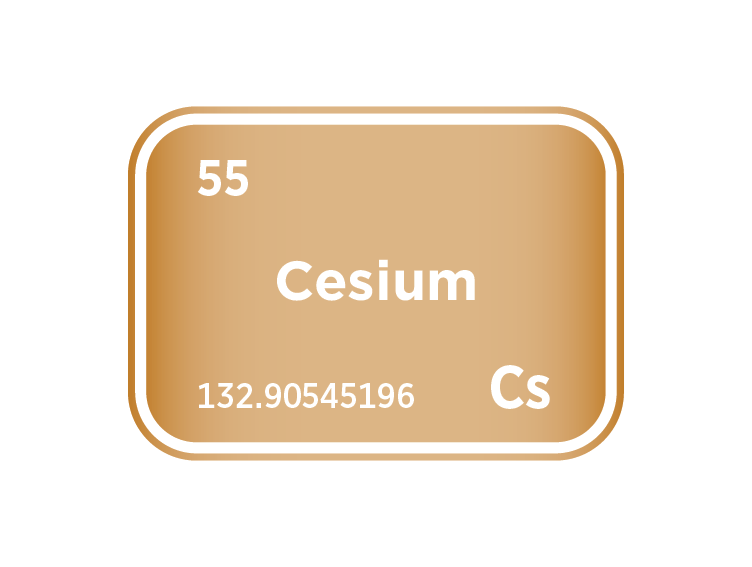
Cesium supply
Cesium is an extremely rare alkali metal, primarily sourced from the mineral pollucite—a cesium-rich zeolite found almost exclusively within zoned lithium–cesium–tantalum (LCT) pegmatites. Commercially viable pollucite deposits are exceedingly scarce, and their global distribution is highly limited, making cesium one of the most supply-constrained critical elements in the periodic table.
The most significant and historically dominant source is the Tanco mine in Manitoba, Canada, home to the world’s largest known pollucite deposit. While this site has historically supplied the majority of global cesium, its production has been intermittent in recent years, shaped by ownership changes, market dynamics, and operational decisions.
Outside Canada, smaller or less-developed pollucite deposits are found in Australia, Namibia, and China. These resources remain underexplored or underexploited, with no sustained commercial-scale extraction currently underway. Australia and Namibia have identified prospective zones with potential for resource expansion, but investment in extraction infrastructure has not matched that seen in other critical mineral sectors.
Additional countries such as Zimbabwe, Chile, Germany, and India have also reported pollucite or cesium-bearing pegmatites. However, these are generally at early exploration stages, often lack economic feasibility studies, or present low cesium concentrations that hinder profitable extraction. As a result, global reserves remain underutilised, and international supply continues to depend on a narrow group of producers.
Exploration for pollucite is technically complex due to its sporadic occurrence within pegmatite systems. It tends to form in small, irregular zones requiring extensive delineation drilling. Furthermore, caesium extraction is rarely economical as a standalone venture and usually depends on the co-extraction of lithium or tantalum to justify capital investment. This bundling requirement complicates project finance and necessitates integrated development strategies, often lacking in countries with emerging or fragmented mining sectors.
Processing pollucite into usable cesium compounds is similarly specialised. High-temperature or acid-digestion methods are required, along with stringent environmental controls to manage residues and emissions. Only a few facilities worldwide can refine cesium to the high purities demanded by advanced technologies, creating an additional chokepoint in the supply chain. These downstream processors typically use proprietary techniques, limiting the accessibility of high-purity cesium products and heightening supply risk for end-users.
The cesium market is marked by its opacity and commercial rigidity. With few active producers and no spot trading, commercial flows are governed by long-term contracts and strategic offtake agreements. This limits transparency, creates high entry barriers for new participants, and reduces market responsiveness to shifting demand profiles.
Cesium’s unique properties underpin its essential roles in atomic clocks, oil and gas drilling fluids (notably as caesium formate), advanced optics, and quantum electronics. In many of these applications, there are few or no effective substitutes, and virtually no secondary or recycled supply exists. This renders even small supply disruptions significant, potentially impacting high-value industries disproportionately.
Recognising cesium’s strategic significance, countries like the United States have included it on national critical mineral lists. With no domestic production, the U.S. and other industrialised economies are increasingly vulnerable to external supply shocks. Yet no large-scale strategic stockpiles currently exist, despite growing calls from defence and energy sectors to secure long-term supplies, particularly for caesium formate used in high-pressure, high-temperature drilling.
The geographic concentration of cesium reserves, notably in China, Namibia, and Canada, raises concerns over potential resource nationalism, export controls, and geopolitical tensions. China’s broader strategy of critical mineral control may eventually encompass cesium compounds as their relevance to quantum computing, timing infrastructure, and secure communications increases. While deposits in Zimbabwe, Chile, and India could enhance global diversification, unlocking their potential will require substantial foreign investment, regulatory clarity, and infrastructure development.
Cesium substitution
Substitution for cesium is highly application-specific. While alternatives such as rubidium, potassium, barium, or xenon may be used in certain lower-spec or cost-sensitive applications, cesium remains effectively irreplaceable in many high-performance and strategic technologies. Its unique physical and chemical characteristics, particularly its low ionisation energy, high density, and strong reactivity, underpin critical roles across precision timekeeping, high-pressure drilling, and specialised electronics. In these domains, substitute materials often compromise efficiency, reliability, or operational performance.
Cesium’s most prominent role is in atomic clock technology, where it defines the International System (SI) second. Although rubidium and hydrogen masers can be used in some timing systems, they do not match the long-term frequency stability of cesium-based devices. As a result, ultra-precise timekeeping applications—including global navigation satellite systems (GNSS), telecommunications networks, and high-frequency trading platforms—continue to depend on cesium. Substituting it in these fields would undermine critical system performance.
In oil and gas exploration, cesium is used as cesium formate brine, a high-density, low-viscosity fluid ideal for high-pressure, high-temperature (HPHT) well drilling. It offers chemical stability, environmental compatibility, and reusability that outperform other heavy brines. While alternatives such as sodium, calcium, potassium formates, zinc bromide, and calcium chloride are available, they exhibit inferior flow properties, lower thermal resistance, or greater environmental concerns. For complex and deep well operations, particularly offshore, cesium formate remains unmatched.
In photoelectric and thermionic devices, cesium's low work function enables efficient electron emission. Substitutes like potassium, rubidium, or barium compounds are sometimes employed, but typically require higher temperatures or deliver reduced emission efficiency. Their use is generally confined to cases where cost or availability justifies diminished performance.
Cesium has also been considered for ion propulsion in spacecraft, owing to its favourable atomic mass and ionisation characteristics. However, due to its inertness, ease of storage, and lower corrosivity, xenon has become the dominant propellant. While cesium is no longer widely used in this context, its properties continue to make it a material of interest for advanced propulsion research.
In chemical synthesis and catalysis, potassium or sodium salts occasionally substitute cesium. Nevertheless, cesium salts often deliver superior catalytic activity, particularly in fine chemical manufacturing and organic reactions. These uses are typically low-volume but high-value, and substitution is usually dictated by cost or material availability rather than technical performance.
In summary, while viable substitutes for cesium do exist in certain applications, they often require trade-offs in effectiveness or durability. The most critical and high-spec applications, such as atomic clocks and HPHT drilling fluids, still depend on cesium, underscoring its strategic value and vulnerability to supply disruption.



Meet the Critical Minerals team
Trusted advice from a dedicated team of experts.

Henk de Hoop
Chief Executive Officer

Beresford Clarke
Managing Director: Technical & Research

Jamie Underwood
Principal Consultant

Dr Jenny Watts
Critical Minerals Technologies Expert

Ismet Soyocak
ESG & Critical Minerals Lead

Thomas Shann Mills
Senior Machine Learning Engineer

Rj Coetzee
Senior Market Analyst: Battery Materials and Technologies

Franklin Avery
Commodity Analyst

How can we help you?
SFA (Oxford) provides bespoke, independent intelligence on the strategic metal markets, specifically tailored to your needs. To find out more about what we can offer you, please contact us.










